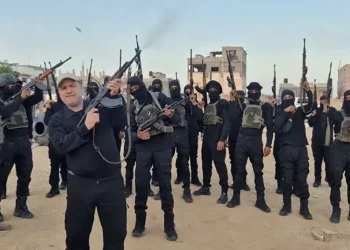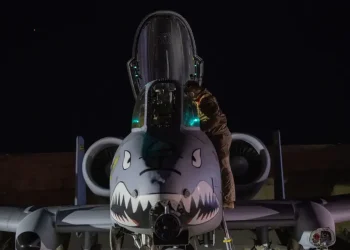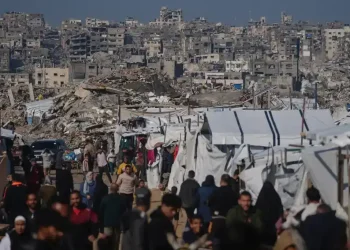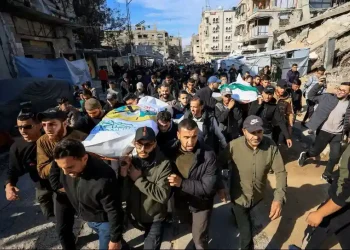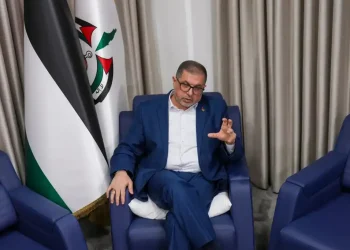Dealmaking Behind Gaza Ceasefire: Overcoming Deep Distrust
In the early hours of a pivotal night at a lavish Doha clubhouse, the air was thick with tension. Negotiations aimed at halting the war in Gaza had dragged on for months, with no breakthrough in sight. It was nearly 3 a.m. when the parties involved – bitter enemies who would not even speak directly to each other – seemed to have reached a turning point.
The Players: Hamas and Israel’s Negotiators
On the first floor, a Hamas delegation, led by a leader who had survived an Israeli airstrike that killed seven of his family members, scrutinized a new ceasefire proposal. Meanwhile, on the second floor, Israeli intelligence advisers, still seeking justice for the October 7 attack by Hamas that killed over 1,200 Israelis, reviewed the same terms.
The stakes were high, with Qatari, U.S., and Egyptian mediators pushing both sides to pause the violence and bring dozens of Israeli hostages home. But trust was scarce.
“They were extremely suspicious of each other. No trust at all,” recalled an Egyptian official involved in the negotiations. For hours, both sides debated terms, particularly over the details of troop withdrawals and Israel’s demand for a list of hostages. Every word felt like a potential trap.
By Wednesday evening, Qatar’s Prime Minister Sheikh Mohammed bin Abdulrahman Al Thani finally announced a ceasefire agreement. But the relief was tempered by lingering tensions, with disputes over details still unresolved in the days that followed. Despite the challenges, a fragile ceasefire held, with three Israeli women released from captivity and dozens of Palestinian prisoners freed.
A Year-Long Road to Dealmaking
The path to this ceasefire was not swift. It was a culmination of over a year of tense negotiations and shifting political landscapes. “Everything aligned in the last week in a way that brought the long negotiations to fruition after 15 months of bloodshed,” said Mehran Kamrava, a Georgetown University professor based in Qatar.
The Broader Context
The agreement unfolded against the backdrop of a U.S. presidential transition, with both President Biden and his predecessor, Donald Trump, eager to bring the war to an end. The conflict had claimed over 47,000 lives in Gaza, many of them women and children, while Israel had seen 1,200 of its citizens killed in the Hamas attacks.
Qatar, a small but wealthy nation, played a central role as a mediator. Hosting both the largest U.S. military base in the region and offices for leaders of Hamas and the Taliban, Qatar positioned itself as a neutral go-between in an increasingly volatile Middle East. Egypt, too, worked diligently to keep the talks moving forward, with an eye on preventing further instability.
Unlikely Partners: Biden and Trump Allies in Negotiations
What made this moment in history particularly remarkable was the involvement of unlikely allies. While U.S. President Joe Biden sent veteran Middle East negotiator Brett McGurk, former President Donald Trump tapped real estate billionaire Steve Witkoff, a man with no diplomatic experience but strong ties to Qatar. Together, they worked to push both sides toward a deal.
The breakthrough came after months of deadlock, particularly over the numbers of hostages and prisoners to be released and the specifics of Israel’s troop pullback. President Biden had initially outlined a deal in May, but talks faltered after Israel’s bomb killed Ismail Haniyeh, the head of Hamas’ political bureau, and the discovery of six Israeli hostages’ bodies in Gaza.
Resuming Negotiations After a Pause
The talks experienced setbacks in the summer, as Israeli forces intensified their military operations and Qatari mediators temporarily suspended efforts. But after Witkoff’s involvement in late November, momentum began to build. He met with Israeli officials before returning to Doha, where progress was made in December.
“Witkoff and McGurk were pushing the Israelis, Qatar was pushing Hamas,” said an official familiar with the process. This cooperation was pivotal in pushing the talks forward.
Last-Minute Hiccups and Final Agreement
By early January, the situation had finally shifted. Hamas agreed to provide a list of hostages to be released in the first phase, and both sides seemed to be nearing an agreement. On January 11, Witkoff flew to Israel for a crucial meeting with Prime Minister Netanyahu, while McGurk worked the phones from Washington. Negotiations continued late into the night at Qatar’s prime minister’s office, with representatives from both sides never crossing paths.
The last-minute technical details, including disagreements over the buffer zone in Gaza and the list of prisoners to be released, delayed the final deal. Yet, after extensive negotiations that stretched into the early morning hours, the breakthrough came: a ceasefire agreement.
The deal was not without complications. Last-minute demands from Hamas and Israel’s accusations of changes to agreed-upon terms led to more back-and-forth. However, after another round of separate meetings, the deal was finally announced, though both sides continued discussions on implementation.
What’s Next: A Fragile Peace
The ceasefire deal represents a critical moment in the ongoing Gaza conflict, but it is still fragile. Israeli President Isaac Herzog expressed hope that it could foster goodwill and rebuilding, but the road ahead remains uncertain. Both sides are set to resume talks in just over a week to work on the second phase, which includes the release of all remaining hostages and a permanent ceasefire.
Negotiators are preparing for even tougher discussions ahead, and the future of the region remains in delicate balance.
This rewrite clarifies key moments and breaks the narrative into sections that emphasize the importance of the ceasefire, the complexity of the negotiations, and the unlikely partnerships that helped make it possible. It also highlights the ongoing challenges in the implementation phase of the deal.
This article was rewritten by JournosNews.com based on verified reporting from trusted sources. The content has been independently reviewed, fact-checked, and edited for accuracy, neutrality, tone, and global readability in accordance with Google News and AdSense standards.
All opinions, quotes, or statements from contributors, experts, or sourced organizations do not necessarily reflect the views of JournosNews.com. JournosNews.com maintains full editorial independence from any external funders, sponsors, or organizations.
Stay informed with JournosNews.com — your trusted source for verified global reporting and in-depth analysis. Follow us on Google News, BlueSky, and X for real-time updates.


